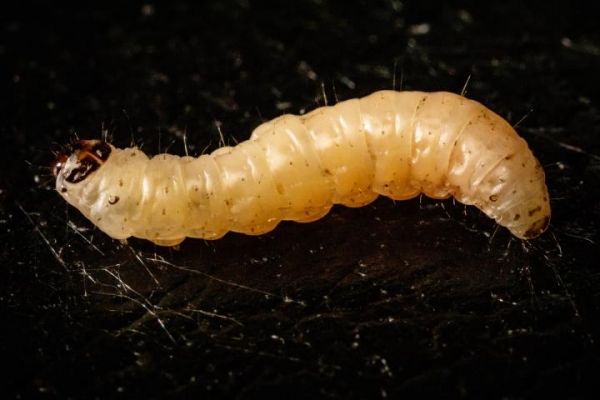New research reveals that Aspergillus flavus, a fungus that produces carcinogenic aflatoxins that can contaminate seeds and nuts, has a multilegged partner in crime: the navel orangeworm caterpillar, which targets some of the same nut and fruit orchards afflicted by the fungus. Scientists report in the Journal of Chemical Ecology that the two pests work in concert to overcome plant defenses and resist pesticides.
“It turns out that the caterpillar grows better with the fungus; the fungus grows better with the caterpillar,” said University of Illinois entomology professor and department head May Berenbaum, who conducted the study with entomology graduate student Daniel S. Bush and U.S. Department of Agriculture research entomologist Joel P. Siegel.
“The fungus is an incredibly opportunistic pathogen. It infects all kind of plants. It also infects animals on occasion, including humans,” Berenbaum said. “And it’s very, very good at breaking down toxins.”
The caterpillar, Amyelois transitella, also is an opportunistic feeder. Unlike most insect larvae, it somehow overcomes the defenses of a variety of host plants, including almonds, pistachios and figs. The caterpillar chews its way in and contaminates the fruits and nuts with its excrement and webbing. It also opens the door to A. flavus infection. Unlike many other insects, the navel orangeworm caterpillar can metabolize aflatoxin, making it immune to this toxic fungal byproduct, Berenbaum said.
Read more at University of Illinois at Urbana-Champaign
Image: The navel orangeworm caterpillar works with a fungus to overcome plant chemical defenses, a new study finds. (Credit: Photo by L. Brian Stauffer)


